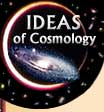
|
|
 |
Who
Was Harlow Shapley? |

|
|
|
|
Harlow Shapley (1885-1972) Little in Shapley's early life suggested his later accomplishments. He was fifteen years old and a crime reporter in a tough Kansas oil town when he walked into a public library and began to read. Soon he shared his mother's ambition that her sons go to college and make something of themselves. Refused admission to a high school, Shapley went instead to a private collegiate institute that was glad to collect his tuition fees. In 1907 he entered the University of Missouri. He meant to study journalism, but the school of journalism was not due to open for another year. Later, Shapley would say that he had opened a catalog of courses, found himself unable to pronounce archaeology, and so went on to astronomy. The story reflects Shapley's sense of humor, for like many young men of the time he was fascinated by science. Shapley earned bachelor's and master's degrees in astronomy at Missouri, and a Ph.D. at Princeton University. After graduating from Princeton in 1913, he rejoined his Missouri astronomy professor, who was now at the Mount Wilson Observatory. There Shapley, using the 60-inch telescope—the most powerful of the time—did his revolutionary research on the scale of the galaxy. In 1921 he became director of the Harvard College Observatory, and built the Harvard astronomy program into one of the very best in the world. In the late 1940s Shapley helped form UNESCO, the United Nations Educational, Scientific and Cultural Organization, and in the 1950's he was caught up in the political debates of the time. But next to astronomy, his greatest interest was the study of ants. |
|
Copyright ©. Brought to you by the Center for History of Physics, a Division of the American Institute of Physics |